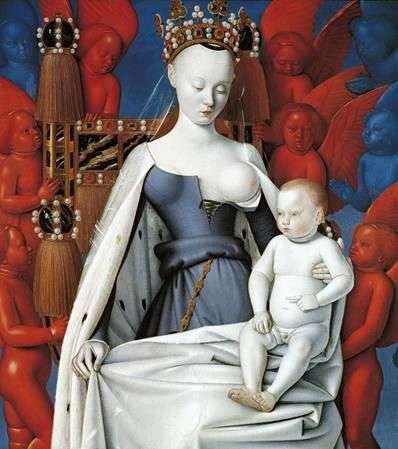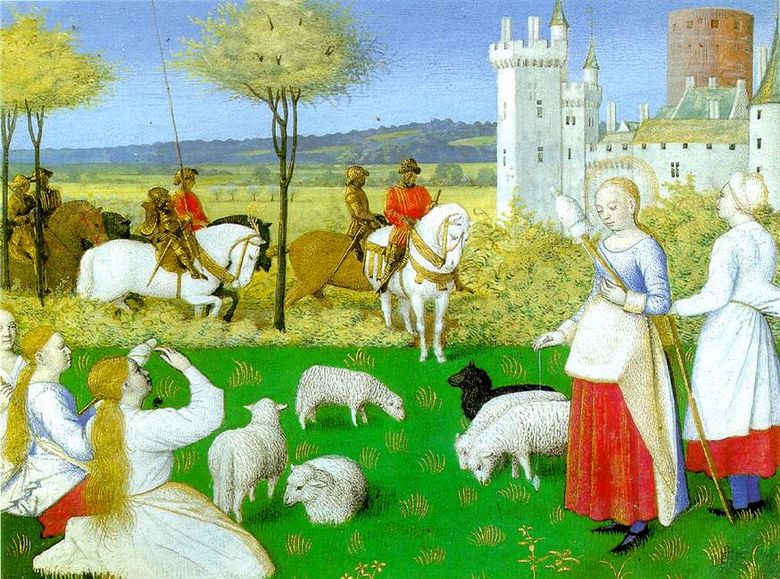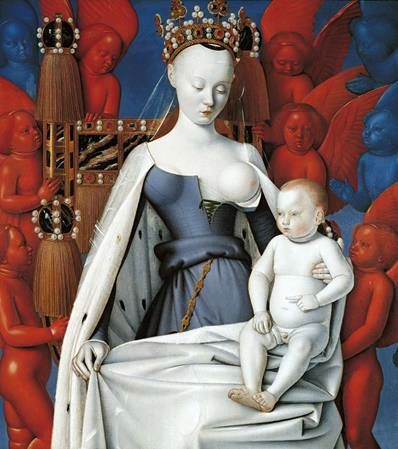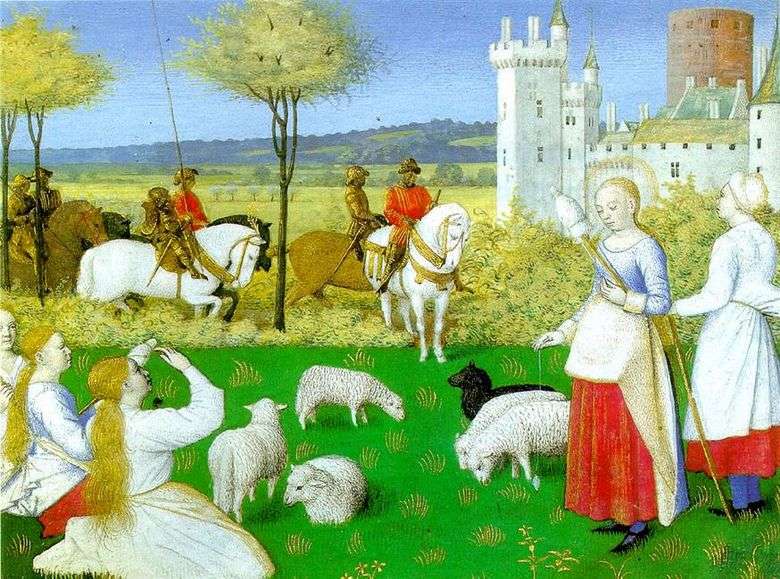
French painter Jean Fouquet is one of the founders of the art of the Early Renaissance in France. Fouquet worked throughout most of his life in Paris. In the 40-ies. he often visited Rome, where he took lessons in enamel technique from the famous artist Antonio Filaret and studied the works of LB Albert, and at the same time he painted a portrait of the Pope. After his return from Rome, the artist created a portrait of the donator. The strongest influence on the work of Fouquet was provided by the works of Masaccio and Fra Andzelico. His manner of drawing led spectators to delight, the undoubted talent of the artist caused genuine admiration, so in 1475 he was appointed a royal painter.
Jean Fouquet, one of the most famous French artists of the 15th century, competed with Marmione in the art of miniature painting. Fouque illustrated many manuscript books, in particular the works of Boccaccio. The most famous works of the artist can be called book miniatures on religious themes and historical subjects in the “Great historical chronicles”, “The lives of famous men and women,” “Jewish antiquities.” A characteristic feature of these works is a realistic reflection of real or mythological events, the plot of which the artist transferred to his contemporary environment of France. For these works are characterized by such features as free space transfer and a wide variety of bright colors. Miniature Jean Fouquet features a soft color, as well as the use of elements of a direct and aerial perspective.
In the portraits of Charles VII and Chancellor G. Juvenel des Jursen, who are currently exhibited in the Louvre, the artist with great truthfulness reflected the nature of the posed.
Fouquet brushes also own several elegant and expressive religious compositions, for example the painting of the right wing of the diptych with the Madonna and Child, created in 1451. This work is now in the Royal Museum of Fine Arts in the city of Antwerp.
Despite the fact that the image of the Madonna and the baby is deeply religious, Fouquet depicted the Holy Virgin in the form of an earthly woman. For some time it was believed that the Madonna is a portrait of Agnes Sorel, the beloved of the French King Charles VII. Among the reasons for such a statement, in particular, is that it was Agnes Sorel who set the fashion for open-breasted dresses: in this dress the Madonna is pictured on the canvas of Fouquet. Her admirer was also a certain Chevalier – the first patron of Fouquet. The painting was painted by the artist in the year of Agnes’s death, so it is quite possible that she was booked in memory of her.
In this picture, as in no other, the influence of Italian artists on Fouquet’s artistic method is clearly seen. The close attention that the painter gives to details, he borrowed from northern masters, such as Jan van Eyck. This is noticeable in the treatment of the crown, adorned with precious stones, and various in texture of clothes, furs and a transparent veil.
One of the famous works of the artist on a religious theme is the painting “Etienne Chevalier with Saint Stephen”. On the canvas Fouquet depicted a praying donor, Etienne Chevalier, who is hugged by a saint patronizing him. St. Stephen is depicted in the vestments of a deacon, Fouque introduced him as the first deacon of the Christian church. In the hands of St. Stephen holds a book on which lies a cobblestone – a sign of his martyrdom.
Fouquet arranged these two figures in the picture so well that they do not seem flat, as in the previous works of French masters. The artist tried to demonstrate the light flux in the picture with great force, and it was this fact that effectively influenced the accuracy of the image arrangement in space and the three-dimensionality of the characters’ figures. This artistic device testifies to the significant impact on the artist’s creative method of his perfect trip to Italy. But in this picture is also noticeable the influence of northern masters, in the study of the texture of materials – fur, fabrics, marble, stone – you can see the similarity with the painting of van Eyck.
 St. Margaret by Jean Fouquet
St. Margaret by Jean Fouquet Madonna y el niño – Jean Fouquet
Madonna y el niño – Jean Fouquet Sainte Marguerite – Jean Fouquet
Sainte Marguerite – Jean Fouquet Madonna and Child by Lucas Cranach
Madonna and Child by Lucas Cranach Vierge à l’enfant – Jean Fouquet
Vierge à l’enfant – Jean Fouquet Santa Margarita – Jean Fouquet
Santa Margarita – Jean Fouquet Madonna and Child by the Fireplace by Robert Kampen
Madonna and Child by the Fireplace by Robert Kampen Madonna with the Child and John the Baptist by Vittorio Carpaccio
Madonna with the Child and John the Baptist by Vittorio Carpaccio